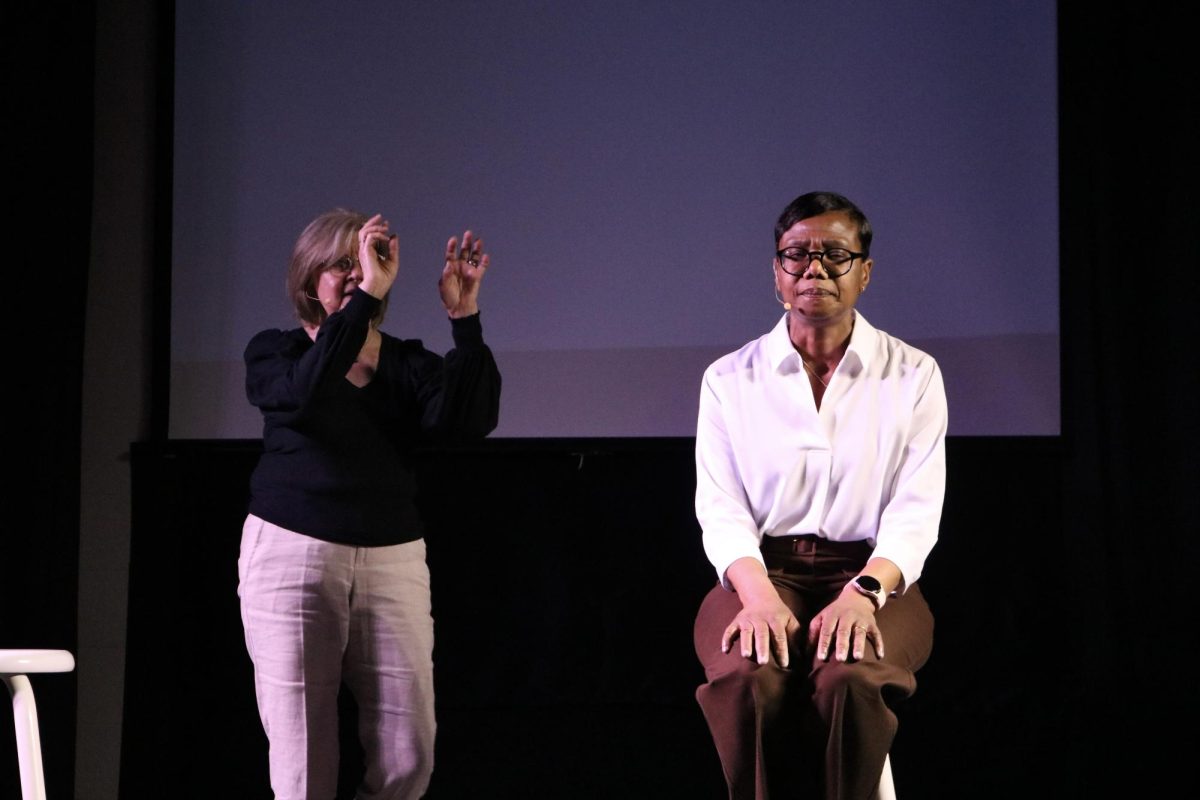By Peter Sullivan
sullivan3@grinnell.edu
The U.S. Supreme Court heard arguments Wednesday on whether an applicant’s race should matter in college admissions, and Grinnell College sought to turn the Court away from a decision that could hinder the College’s efforts to achieve diversity.
The case is Fisher v. University of Texas, in which Abigail Fisher, a white woman, is suing the University, saying she was denied admission because she was passed over for minority students. The University of Texas admits the top 10 percent of every high school class in the state, but then takes race into account as one of many factors in admitting the rest of the entering class.
The Court ruled in 2003 that colleges may take race into account as long as it is one of many factors and it is considered on an individual basis, with no racial quotas. However, the Justices now on the Court are more conservative and they could issue a ruling that bans all consideration of race at all colleges, including Grinnell.
Grinnell joined an amicus brief (an argument sent to the Court by parties outside the case) with 36 other selective small liberal arts colleges pressing the Court not to further restrict the use of race in admissions.
“Private, highly selective colleges have a compelling educational interest in enrolling broadly diverse—including racially diverse—classes, and cannot do so without taking the diversity they strive for into account,” the brief states.
In supporting the idea that diversity is a compelling educational interest, the brief quotes a statement from former Carleton College President Robert Oden, which it says is representative of the views of all the colleges on the brief: “The single greatest source of growth and development is the experience of difference, discrepancy, anomaly. The free and uncensored play of ideas and opinions and arguments and positions is central to the fabric of a liberal arts education, and a college peopled by those representing and trying out such ideas and opinions and arguments is a finer college for the presence of these people.”
The brief stresses that none of the colleges have racial quotas, but rather use race as one of many factors in promoting diversity among the multitude of applications they receive for a much smaller number of slots in their classes. The brief adds that all students, including white ones, overwhelmingly indicate that they want to go to school at diverse colleges. Furthermore, the brief says that race needs to be explicitly considered because research shows SAT scores are generally not predictive of success for African-American students and special efforts are needed in minority recruitment.
“Nor could [these colleges] obtain a class with more than token numbers of African-American or Latino students without making special efforts to attract such applications and then considering those factors as well,” the brief states. “This is particularly important for those institutions (e.g., Bates, Carleton, Grinnell, and Middlebury) which, because of their rural locations in notably nondiverse states, would without such efforts draw fewer applications from African-American or Latino students.”
The 2003 equivalent of this brief, filed by Amherst College and many of the other same colleges as this version (but not Grinnell), did play a role in the 2003 decision. Justice Anthony Kennedy cited it as an example of a system that was better and more holistic than the arguably quota-based system of the University of Michigan Law School that he thought unconstitutional.
“I think he’s saying that the numbers from Amherst say that they are taking a far more holistic approach, because there is a fluctuation in the number of minorities they’re admitting [from year to year],” said Helen Knowles, Political Science. “Whereas if you don’t have that fluctuation, it strongly suggests they’re counting and that, to Kennedy, is wrong. He has time and time again said you should not treat someone differently purely because of their race. If it happens to become a factor to consider, that’s fine, but it can’t be the be all or end all.”
Knowles said she expects Kennedy, widely viewed to be the swing vote in the case, to stop short of a full ban on affirmative action, but said that he very well might restrict the Texas system in some way.
She said he is again likely to cite the brief from Amherst, now joined by Grinnell, as an example of a more holistic and more constitutional approach.
Grinnell administrators reinforced and expanded on the brief’s arguments. Vice President for Enrollment Joe Bagnoli said that Grinnell already has some difficulty attracting minorities.
“We have a number of highly qualified domestic students of color who are admitted every year at Grinnell,” Bagnoli said. “We do not yield as high a percentage of them as we would like. Some of these students have significant options with respect to financial aid offers at other institutions and we have a difficult time with yield.”
He pointed out that Grinnell has long lagged behind its peers in the percentage of the student body made up by domestic students of color, but recently the College has made some gains. The percentage of students that were African-American in 1999-2000 was just under three percent, compared to an over four percent average for the top 25 liberal arts colleges in U.S. News and World Report rankings. That climbed to 5 percent in 2010-2011, about even with the top 25 average. Over the same period, Hispanic enrollment has climbed from about four percent to about seven percent, which is just slightly less than the top 25 average.
A court ruling barring Grinnell from considering race could slow or reverse this progress. Bagnoli said accounting for the obstacles facing minorities is important to predicting success at Grinnell and making an admission decision.
“Large numbers of minority students have been enrolled at increasingly disadvantaged schools, and so if our process did not take that into account, for example, we might judge a candidate’s qualifications more severely than would be appropriate given issues that pertain to not only race but also to questions of socioeconomic status,” Bagnoli said.
President Raynard Kington rejected arguments, such as Fisher’s, that white people are sometimes treated unfairly by admissions systems that consider race.
“We look at everything in the record,” Kington said. “In some hypothetical world, there are two people that are exactly the same and one is white and poor and one is middle class and black, but that’s not the way it works in reality. We look at a range of characteristics, and I don’t think it ever comes down to that type of tradeoff, because in fact we work pretty hard to give poor white kids an advantage as well.”
Even with some consideration of race in admissions, Grinnell has not been able to attain its ideal level of diversity.
“We’re still not having the success rates that many of us would like to have in terms of diversity, along many different dimensions,” Kington said. “Why? Because the reality is that opportunity in this country is strongly tied to social position, from the day you’re born, and what these programs try to do is sort of level the playing field, in lots of ways, because otherwise, institutions like ours will return to what they once were, which is places where, by and large, people with resources have an opportunity to receive a first-rate education.”






















































